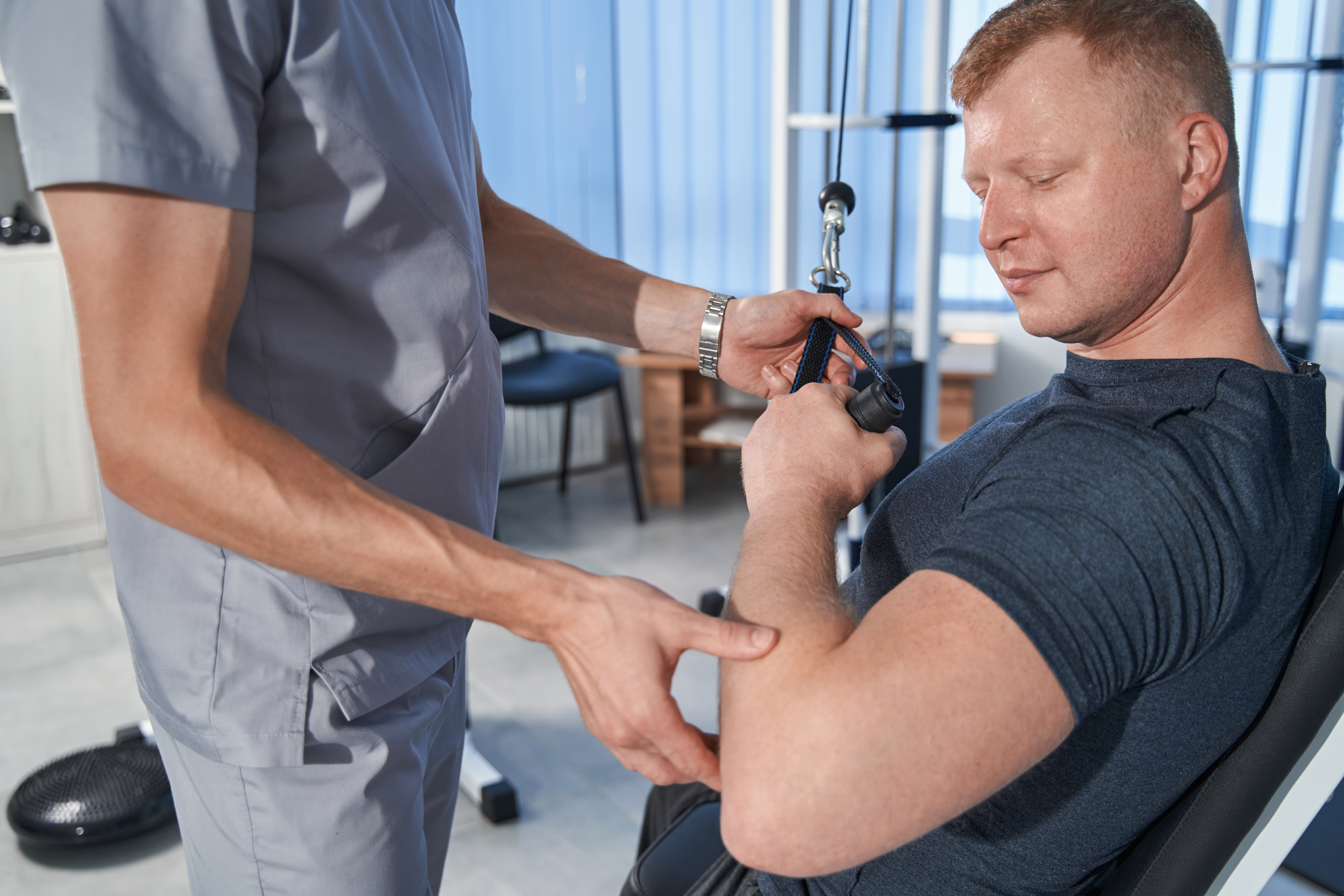
About
Oftentimes, athletes of a particular sport suffer the same types of injuries. Repetitive stress on certain parts of the body can result in injuries that are no surprise to physical therapists. At the Sports Medicine Institute, our therapists believe that it is important to maintain a level of performance that’s right for you, and if preventive measures are taken, most injuries can be avoided.
The rehabilitation team at the Sports Medicine Institute is the expert in caring for athletes. In fact, our physical therapists, doctors, athletic trainers and orthopaedic surgeons are the same skilled team that works with athletes at Wofford College and the University of South Carolina-Upstate. So whether you’re a weekend warrior or a student athlete who pushes the limits, our team is here to get you back on your feet.
Physical therapy is a large component to returning an injured body back to the playing field. Not only will we help you recover from an injury – no matter how long ago that injury occurred – we can help you prevent further injury.
Services
Physical therapy services offered at the Sports Medicine Institute include:
- Evidence-based treatment
- Orthotics
- Joint mobilization
- Concussion management
- Post-operative therapy
- Soft tissue mobilization
- Return-to-sports testing
- Functional movement screening
- Selective functional movement assessment
- Anterior cruciate ligament prevention
- Corrective exercise
- Postural restoration
- Performance enhancement
Injury Prevention Needs to Start Early
Monitoring early how children participate in sports and training for athletic activity and competition can prevent injuries from happening, especially to young children. When children lose the ability to participate in sports because of an early injury, they also lose the benefits of frequent exercise, teamwork and the understanding of healthy competition.
Help young people avoid injuries using the tips from these three programs offered at the Sports Medicine Institute.
Elbow Injury Prevention Program
Athletes who play specific sports like baseball, softball, tennis and gymnastics often put extra strain on the elbow, causing micro tears to the ulnar collateral ligament found in the elbow. The surgery to repair this damage using a graft from another part of the body is often referred to as Tommy John surgery.
Preventing Tommy John surgery is key as youth begin a long athletic career in sports. These tips apply to young baseball players but can easily be adapted to those who play other sports with overuse of the elbow.
- Prepare for the season, avoiding excessive throwing in the first weeks of the pre-season
- Vary speeds for each pitch type
- Use the entire body in a coordinated sequence
- Rest, hydration and good nutrition repair the tears more quickly
Avoid Problems in Young Pitchers
- Act quickly if a pitcher complains of pain in the elbow or shoulder, and discontinue pitching
- Teach good pitching techniques early on
- Respond to signs of fatigue (decreased velocity, accuracy, dropped elbow, etc.)
- Do not pitch more than 100 innings in one calendar year
- Avoid overhead pitching or pitching in competitive baseball for four months of the year
- A pitcher should not also be a catcher on the team
- Participate in various sports to increase athleticism and interest in other sports
ACL Injury Prevention Program
Agility sports can wreak havoc on the knee. Athletes who play basketball, soccer, football and those who ski are likely to sustain a knee injury if they don’t instill preventive measures early on.
The Sports Medicine Institute offers several training programs to help athletes avoid injury to the anterior cruciate ligament (ACL). In addition, athletes can use these common sense activities prior to participating in sports to help avoid injury:
- Warm Up: Warming up muscles prior to any activity reduces the risk of injury
- Stretching: Never stretch a cold muscle; stretching improves your range of motion and reduces stiffness in your joints
- Strength and Stability: Developing muscle strength around the knee ultimately contributes to stability
- Plyometrics: Increase muscle power with rapid stretching and contracting of the muscles; for example, jumping and rebounding
- Agility: Learn to quickly change the direction of the body in an efficient and effective manner
- Balance: Balance training is beneficial to stabilize the joints or keep the joints in proper alignment
- Cool Down: Don’t skip this at the end of a physical activity. A cool down allows your muscles to elongate and reduce muscle soreness
Shoulder Injury Prevention Program
Shoulder surgery is often necessary when an athlete overuses an arm in sports such as volleyball or baseball. The excessive and repeated use of one arm can result in damage to the bone, the muscle or the tendons that are used in that constant action.
Preventive measures can be taken early on to avoid injury to the shoulder and keep your athlete playing sports long into adulthood. Start your young athletes with good habits:
- Stress the importance of rest
- Mandate pre-season physicals
- Enforce warm-up and cool-down routines
- Be sure athletes are taking in an appropriate amount of water for their level of activity
- Educate athletes on proper nutrition
- Discourage early age specialization; play multiple sports and positions
- Treat symptoms of injuries early on; encourage athletes to speak up if they experience any pain
- Whenever possible, mandate (baseball) pitch counts and limit number of matches or tournaments played
- Avoid playing sports with repetitive motion year-round, back-to-back competitions and playing the same sport for more than one team at a time.












